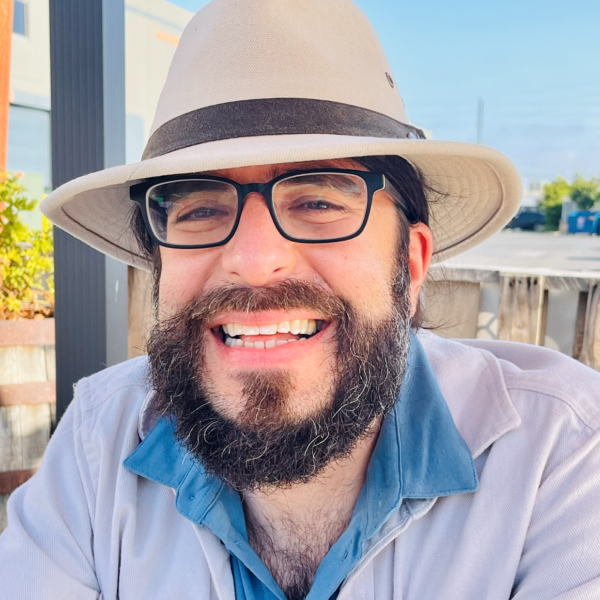Advertisement
Field Guide to Boston
Gay Community News at 50: The queer outlet that went from Boston to the world
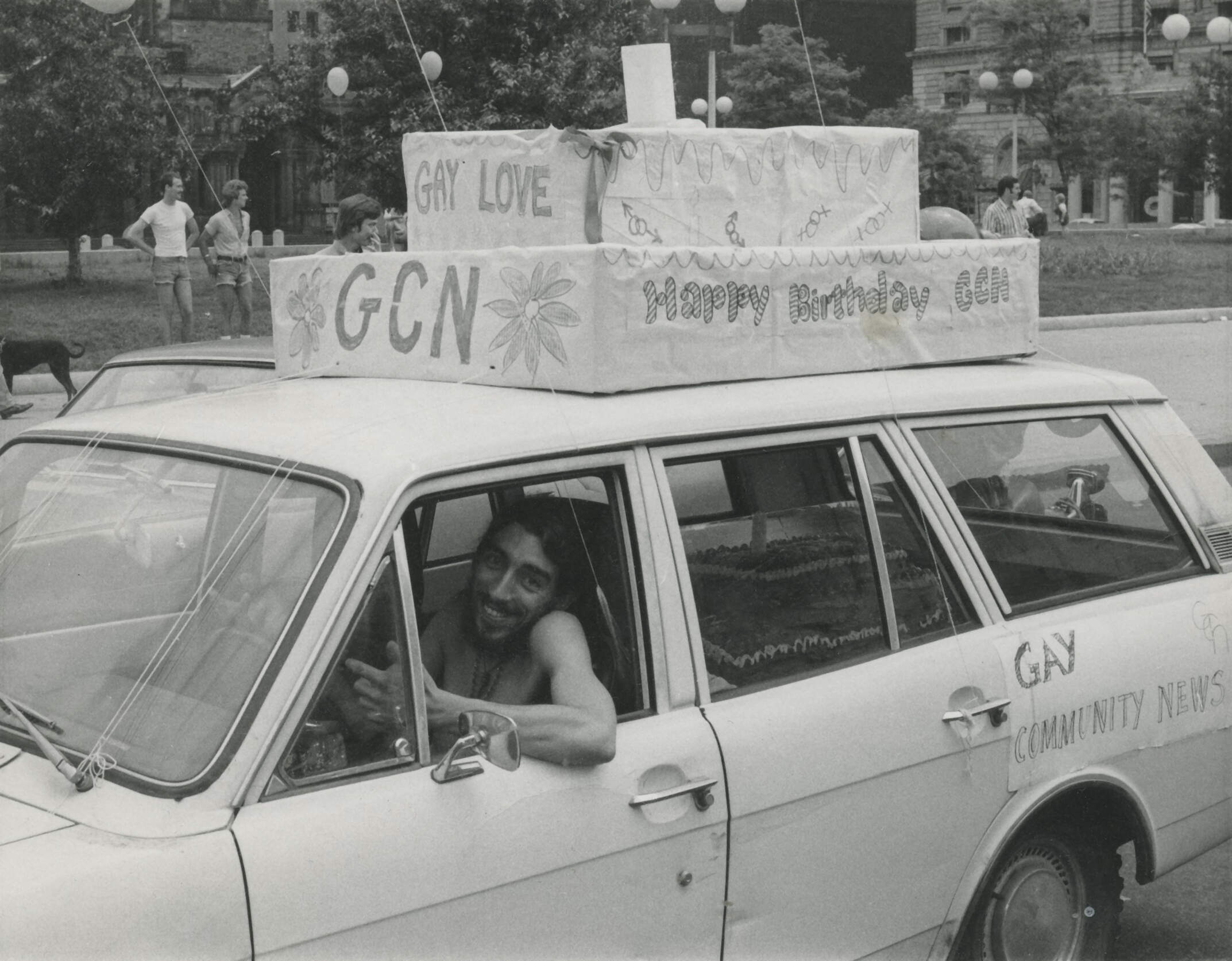
Even ardent consumers of queer Boston media might not have taken much notice of the five-page mimeographed publication that made its debut on June 17, 1973. Called the Gay Community Newsletter, it listed a handful of local events including a softball game and a meeting about trans issues, the phone numbers of local LGBTQ organizations, and the few TV and radio shows that covered gay and lesbian issues (including “Gay Way Radio” on WBUR).
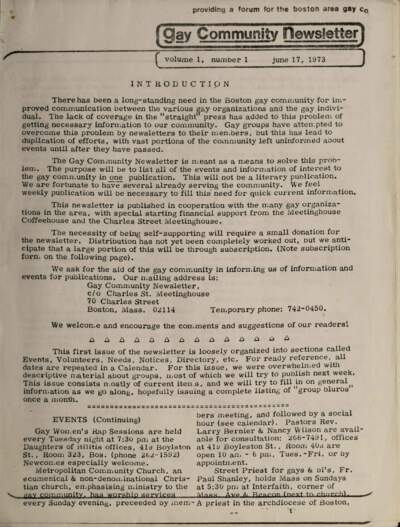
But within a year, GCN became Gay Community News, tripled in size, and featured news stories, commentaries, personal ads and letters to the editor that provide a glimpse of what queer life was like in New England in the immediate post-Stonewall era. The paper would enjoy a 26-year run. Many of its staff members and contributors became leaders of major LGBTQ organizations. Now, The History Project and the Massachusetts Historical Society are exploring GCN’s legacy with a three-part series of live and virtual events called Gay Community News at 50.
“Boston gets overshadowed in the gay liberation-era history, but GCN soon became a publication with a national and international reach,” says History Project Executive Director Joan Ilacqua. “It is amazing to think that it came out of our little city.”
“It felt like we were in the center of the universe, with the phone ringing constantly, and people coming and going to report and get information,” remembers writer Amy Hoffman, a GCN features editor who wrote a 2007 book called “An Army of Ex-Lovers: My life at the Gay Community News.” “But in another sense, we were so marginal that it’s hard to remember what it was like today. We would never have seen an article in The Boston Globe or New York Times about anything having to do with LGBTQ people. … In terms of queer culture, we covered every queer concert, book, play and performance. There was so little of it that you could review every queer book that came out.”
There was another reason the phone kept ringing, says Hoffman. “We were the only listing in the phone book under the word ‘gay.’ So we got phone calls about every conceivable thing having to do with LGBTQ support — people being thrown out of the house for being gay, people wanted to know where bars were, or if they just needed help and wanted to talk to someone.”
At the time, the word “gay” was so taboo that subscribers got their copies of GCN in plain unmarked brown envelopes, which were stuffed by volunteers. Some copies were sent to queer incarcerated people and a prison pen pal project was part of GCN’s mission. “I used to feel like anybody who was gay in Boston at that time stuffed papers at some point,” says Hoffman.
GCN’s finances were usually precarious not just because “a lot of advertisers didn’t want to advertise in a gay paper, but also because we were often alienating our best advertisers, the bars,” remembers Hoffman. “There was a much larger network of queer bars than there is now, but part of the reason GCN was founded was as an alternative to the bars.”
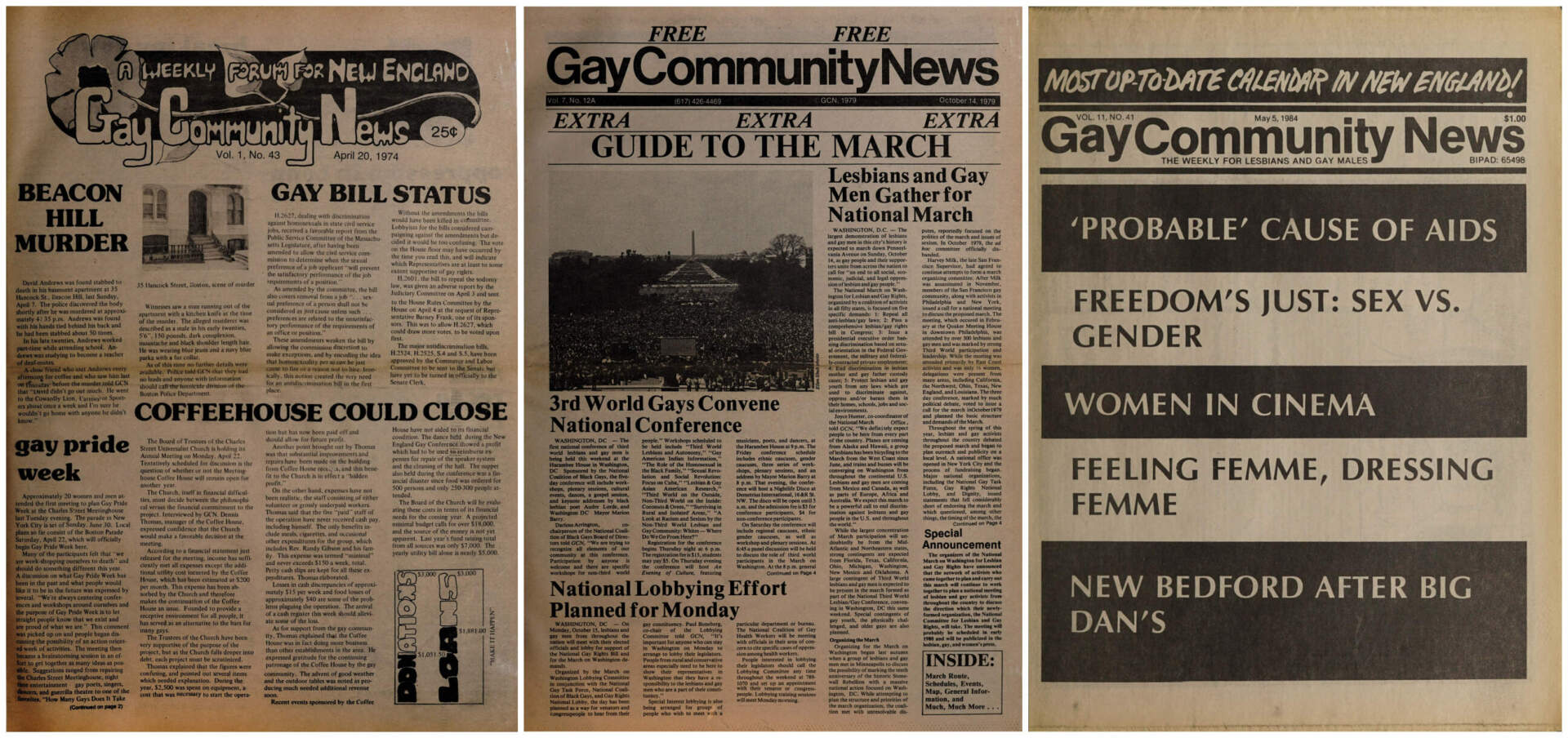
The paper was the most prominent Boston-area queer print voice of its era, but it wasn’t the first. Longtime GCN contributor Michael Bronski, now a Harvard professor, says that “Boston, for a relatively small city, had from the beginning a vibrant gay press.” Bronski first wrote for the provocative Fag Rag. The Mirror and Tommy’s Connection were more focused on bars and nightlife, and Lavender Vision mostly covered the lesbian community.
“GCN was the first publication to really look at, in a comprehensive way, national and local news,” says Bronski. “The Advocate was national but focused mostly on men until much later on,” while GCN stood out at the time for writing about all of the groups that today would be covered under the LGBTQ umbrella.
In the 1980s, GCN was one of the first outlets to cover the HIV/AIDS crisis. “It was very important because AIDS was not covered in the mainstream press at all,” says Bronski. “We just needed to get the information out there: accurate and sane safe sex guidelines, we had to document discrimination happening against gay men with HIV, and we had to negotiate an entirely new world of medical information we had never encountered before.”
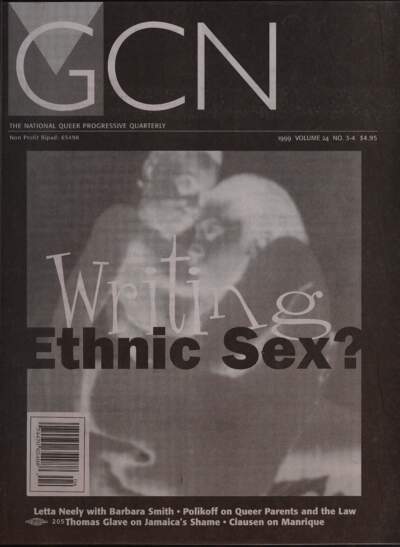
The paper’s own staff and contributors were impacted by HIV. “You weren’t just covering the story, you were also part of the story,” says Bronski. “And there was a matter of how do we write obits of people who we knew. How do we think of collective mourning?”
In 1992, the paper suspended publication. A year later, it introduced a new, less frequent format, and in 1999 it published its last issue. Ilacqua notes that by the ‘90s, mainstream outlets were covering LGBTQ topics and the internet was changing how consumers received information. The paper also faced competition from Bay Windows, which still publishes today.
GCN’s archives have been digitized by Northeastern University’s Archives and Special Collections, with nearly every issue available online. “You’re seeing in these issues in real time the debates the gay community was having over questions like ‘what is gay liberation, and what is part of movement and what isn’t?’” says Ilacqua. “These are things we’re still debating today.”
“There was this important piece of the movement that was a cooperative project,” says Hoffman, “and the fact that it let organizations form, people meet each other, and protests to be organized, all enabled a lot of things to happen in Boston and New England.”
The series of Gay Community News at 50 events begins Wednesday, Oct. 25, with “Defining GCN.” It continues Nov. 8 with “Controversy, Content and Coverage,” and concludes Nov. 29 with GCN’s Impact & Legacy. All events begin at 6 p.m. and take place at the Massachusetts Historical Society, 1154 Boylston St. in Boston, as well as on Zoom.
